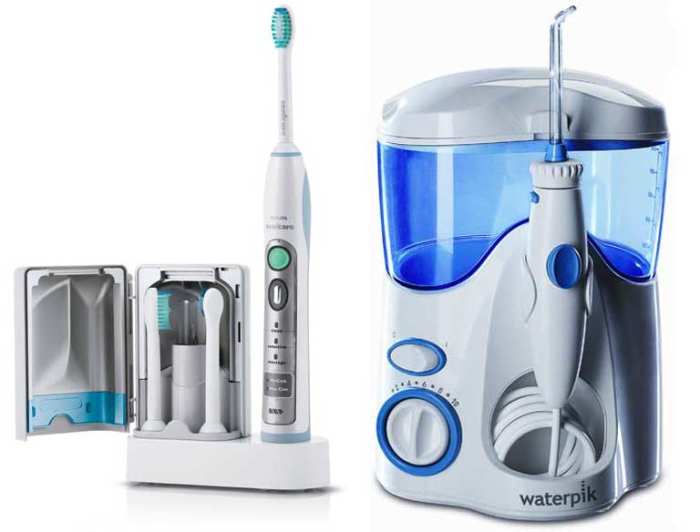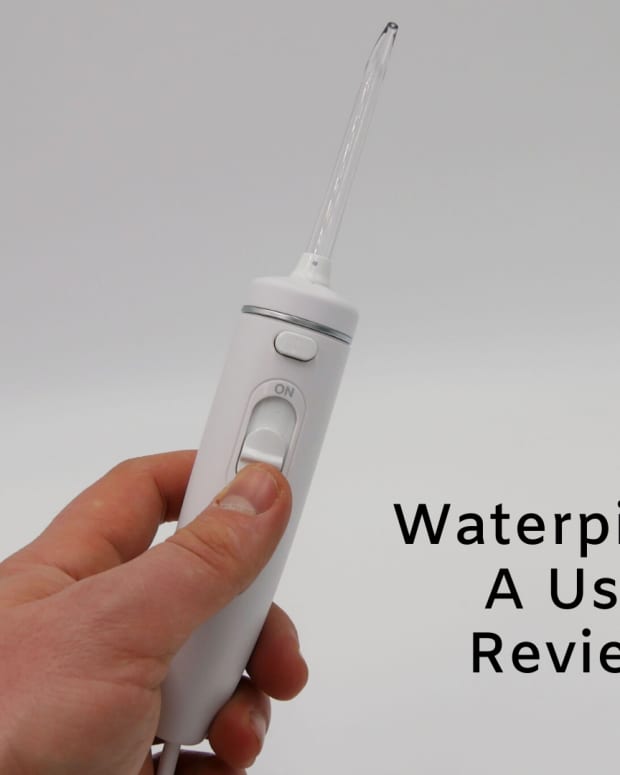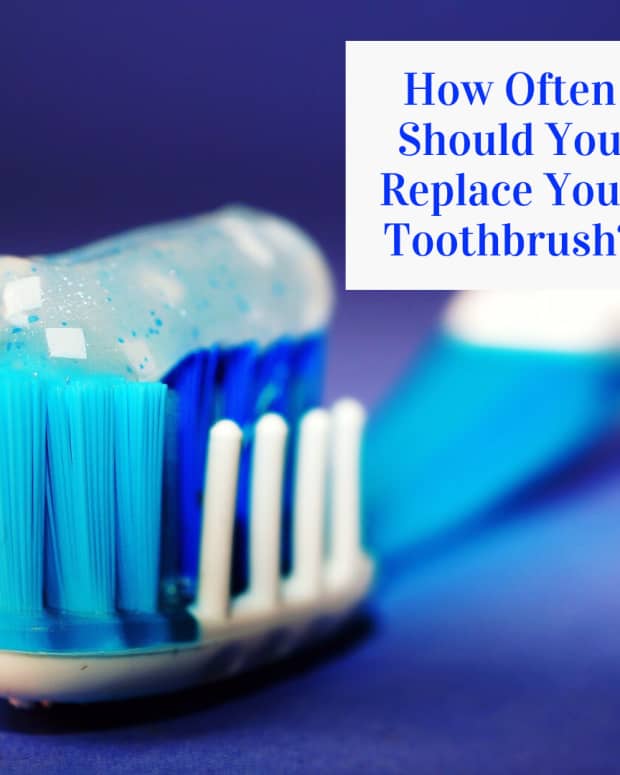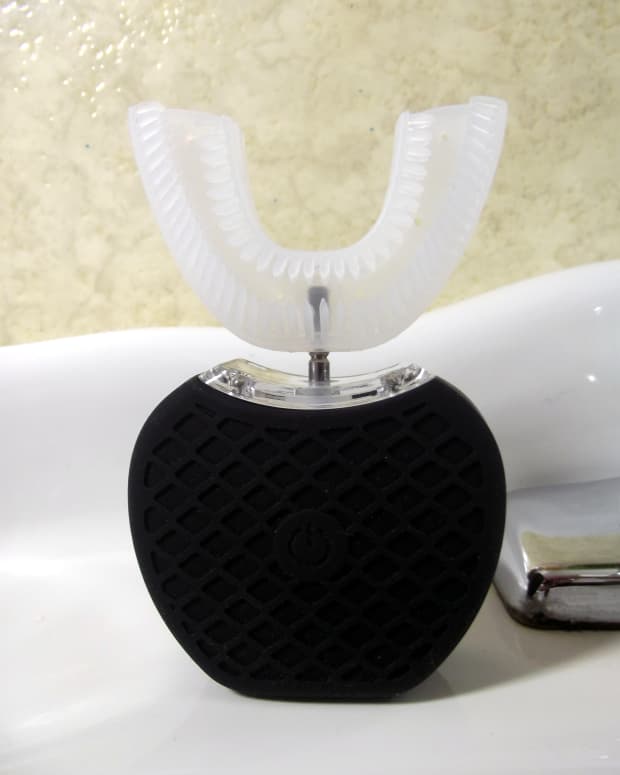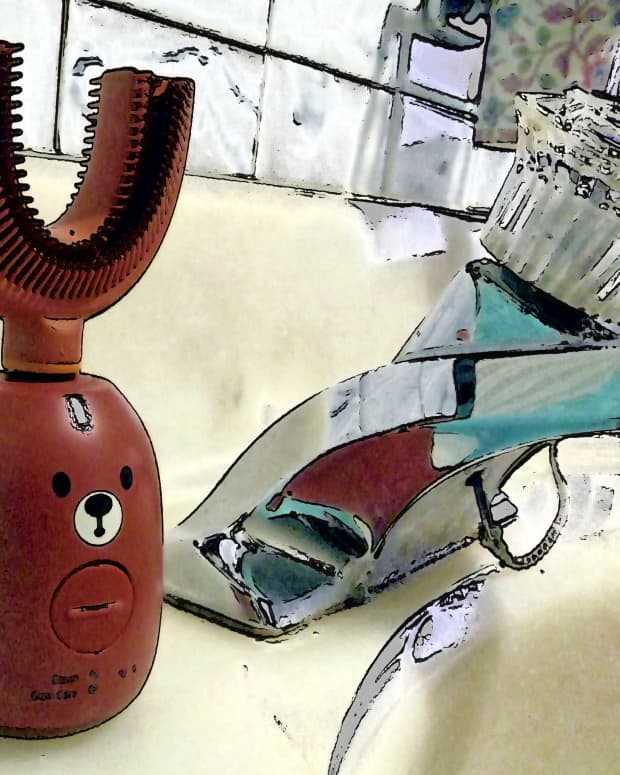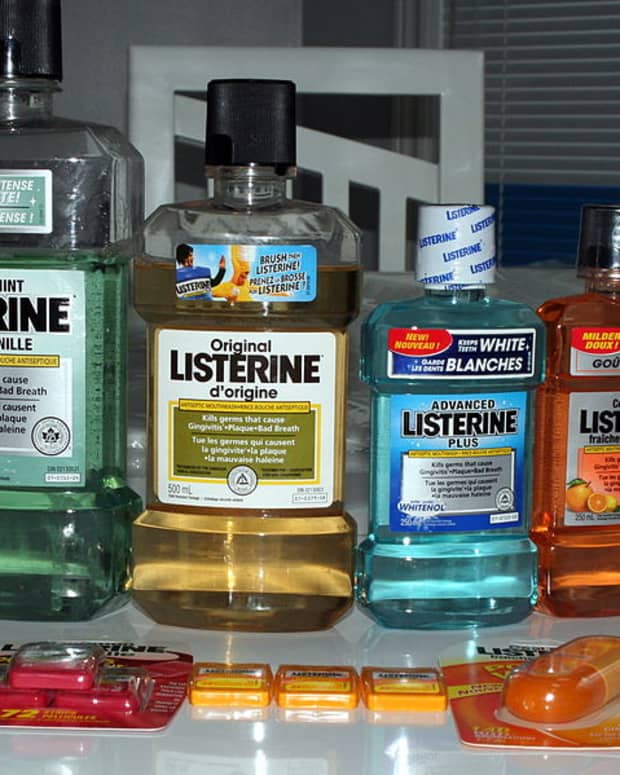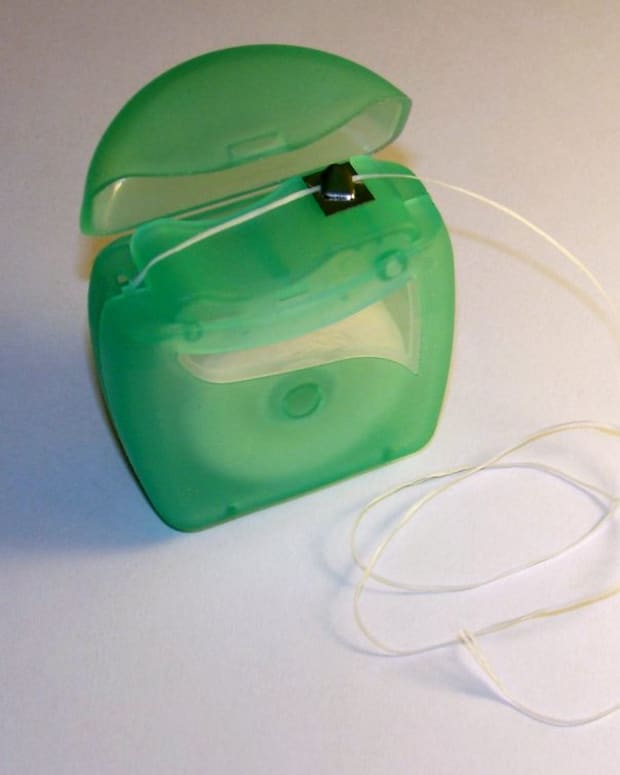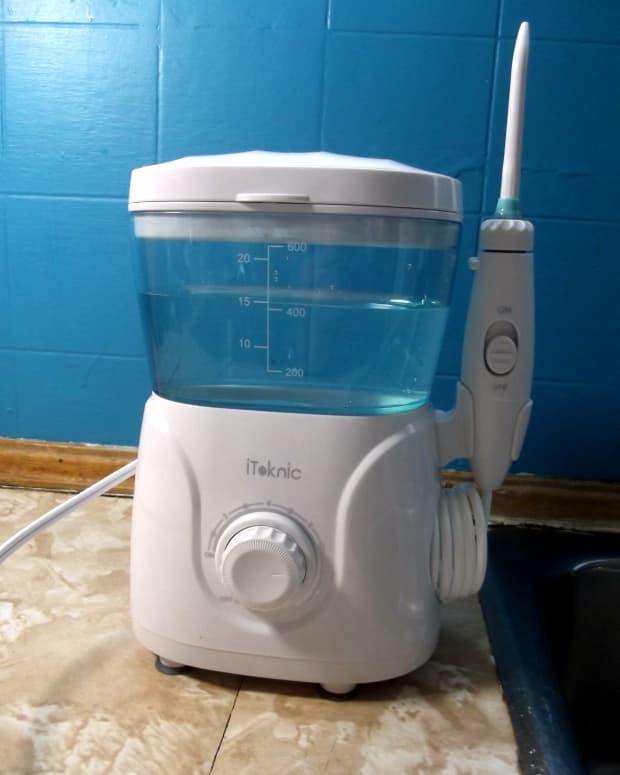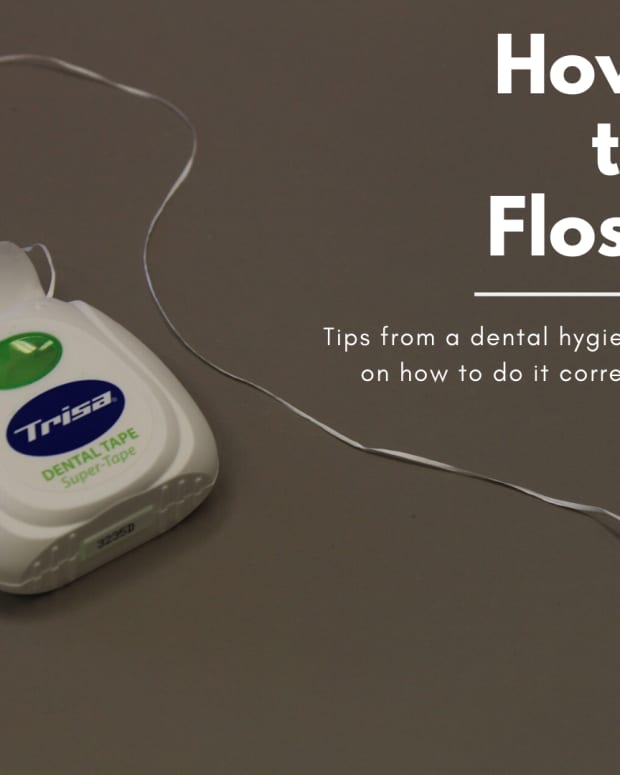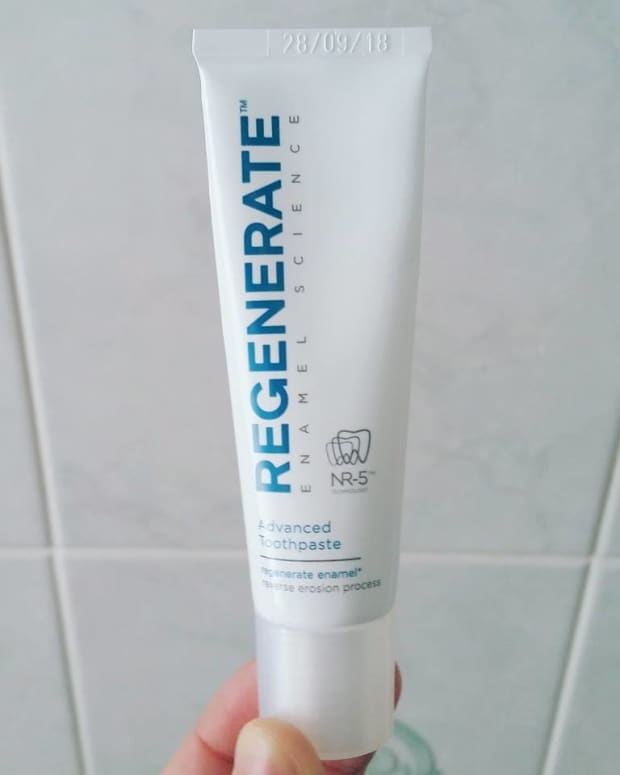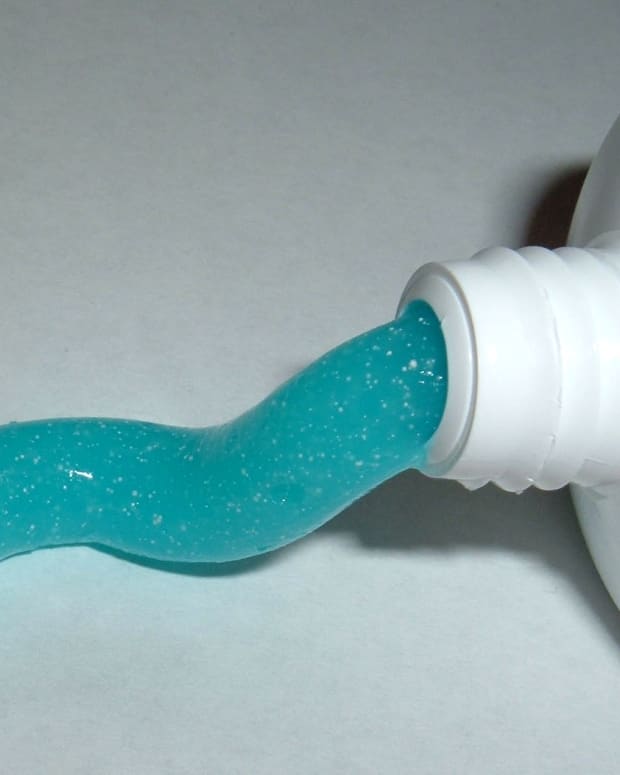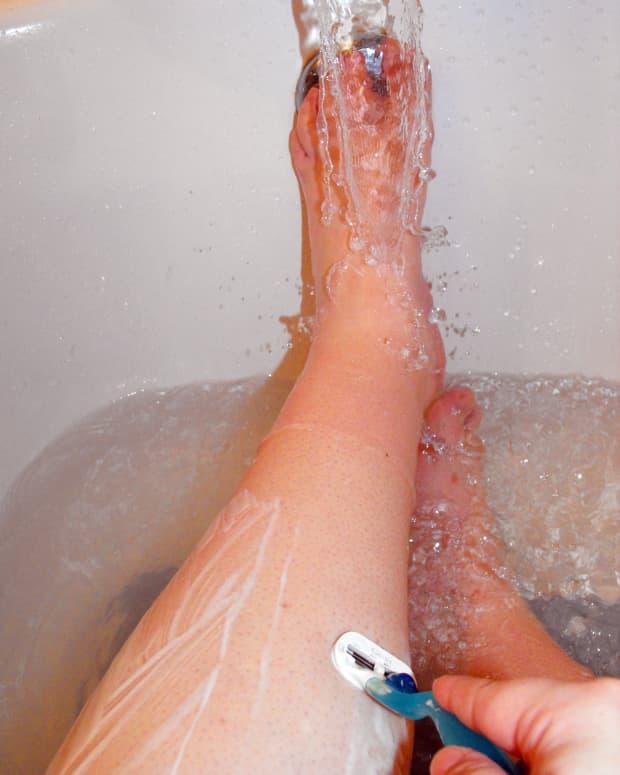Which Is Best: A Sonic Toothbrush or Water Flosser?
The author is a scientist with a passion to describe the natural world in easy to understand ways.
I started caring about my teeth late in life. When I was young, I brushed twice a day, in a dutiful kind of way but not for as long as I should. In my 40s, I had a lot of stuff to think about and often just forgot about things like tooth care.
In my 50s, I began to pay the price. Fillings got bigger, gums receded, and a couple of teeth were too far gone to save. When parts of your body start being thrown away in the garbage, it is a wake up call.
This is what my dentist said: "Keep your teeth really clean and gingivitis will more or less disappear."
He meant flossing and brushing like a crazy, of course. But he also pointed out that there are alternatives. Water flossers and sonic toothbrushes. I have tried both.
How Do They Work?
Sonic toothbrushes use sound waves to agitate water. The water moves fast enough to scour plaque from teeth. The brush does not need to touch the plaque for the high energy water flux to be effective. So, hard to reach paces get attention.
Water flossers fire water at very high speed to get between teeth and below the gum line. It is like using a high pressure jet to clean an algae covered wall.
What a Good Sonic Toothbrush Has to Offer
- Like any electric toothbrush, these appliances have optimal brushing times—usually three minutes. Less than this and your teeth aren't getting enough cleaning. More than this and your teeth will wear away too quickly. A light or alarm should tell you when the time is up.
- A 30-second indicator is useful to tell you when it is time to move on from one part of your mouth to the next. This feature helps make sure you don’t overdo some areas and neglect others.
- A good sonic toothbrush has two or more pressure settings. The lower pressure can be used on sensitive areas. Higher pressure will give the best cleaning results. The lower pressure is also useful for beginners. The power of these toothbrushes takes a while to get used to.
- Color coded brush heads are important if more than one person will be using the toothbrush
- A facility for storing all the brush heads in the toothbrush base unit will make your bathroom neater. It is also less likely that germs will spread.
- Quality manufacturers offer warranties of two years, so don't settle for less.
Do Sonic Toothbrushes Really Work?
There has been a small amount of research into sonic toothbrushes. It is not especially conclusive but there are certainly benefits.
This study from Stanford found that plaque could be reduced significantly, up to 3 mm from the tips of the bristles by the violence of the sonic agitated water flux.
Studies have found that levels of gingivitis in a group using a sonic toothbrush are better than in groups using ordinary toothbrushes.
The thing is, it cannot be proven that it is the sonic element of the toothbrush that is improving tooth care. It could be that when someone buys one of these machines, they put more thought and effort into brushing.
The built-in timer helps to keep people brushing longer. Getting value for money (spent on the sonic device) might matter too, as a motivation to brush more carefully.
Or it might just be that people who are suddenly being very careful about tooth care buy and use these devices.
Do Water Flossers Work?
When they first appeared, some makers said that sonic toothbrushes could do away with the need for flossing. They quickly backtracked when scientific studies contradicted this assertion.
On the other hand, there is no doubt that a water flosser is very effective at removing plaque from hard to reach places and can do at least as good a job as dental floss.
This study supports the effectiveness of all kinds of flossing but concluded that the Waterpik was the most effective tool.
My Own Experience
It is not very scientific maybe, but I have based my assessment of the value of these toothcare devices on two things:
Read More From Bellatory
- Bad tastes in the mouth.
- What my dentist tells me when he looks at my teeth.
Getting rid of bad, gingivitis-type tastes in my mouth became an obsession for a while when I realized how stupid I had been in neglecting my teeth.
When I started using a Philips Sonicare toothbrush, there was a serious improvement in morning taste. Maybe it was the timer that got me brushing longer or the fact that I also started using a mouth wash.
My dentist was moderately impressed but asked me why I had not gone for a water flosser. It was a bit late for him to say that, of course.
It was not until I left the Sonicare in a hotel room a year later that I invested in a waterpik.
That made an even bigger difference. Even my dentist was impressed.
For the first time in my life, I really feel like my mouth is in good shape.
This does not mean that I saying that the Sonicare is no good. It helped me get my teeth in good shape. but of course I still needed to floss. And personally, I think a water flosser is way better than traditional dental floss.
The Waterpik
As I have already said above, the Waterpik is a kind of high pressure hose. It is tiny. of course, but it jets out water at a pressure of 5 to 90 lbs. per square inch and at up to 1,600 pulses per minute.
It cleans between the teeth and deep in the gums. Various attachments are available to massage gums or brush at the same time.
The Waterpick is also recommended by the Journal of the International Academy of Periodontology as having superior plaque removal capabilities when compared with either the Sonicare Elite or Oral-B Sonic.
Sonicare
The most popular sonic toothbrushes are from the Philips Sonicare product line. They were the first to fully exploit the new ultrasound technology and they have the quality to last.
A useful feature of the Sonicare range is the option to buy a UV light sterilizer and storage case. A toothbrush with heads can be packed inside and sterilized in a 10-minute operation. 99% of bacteria are killed.
These electric tooth brushes range in price from around $55 to $150.
One Woman's Review of the Sonicare Flex
The Ultreo
The Ultreo sonic toothbrush has a patented waveguide technology, which combines with a very fast bristle speed to generate microbubbles that do the cleaning.
Users seem to love it, which is why I have mentioned it. I have never tried it myself.
This content is accurate and true to the best of the author’s knowledge and is not meant to substitute for formal and individualized advice from a qualified professional.
Comments
ap on July 21, 2017:
I have used Sonicare toothbrush for over 17 years. Ever since I started to use it I have had no dental treatments! Sonic brushing definitely works.
I use the gum massage function three to four time a week, it keeps sensitivity at bay.
Here is an additional benefit of Sonicare....
I use it (with a seperate head of course :) ) to massage the back pains and any other aches and pains I get thru sports. The soni frequency massage will get the blood circulation and rid of aches and pains.
I massage my face for two minutes several times a week. No wrinkles :)
Try it
Will Apse (author) on November 17, 2009:
Thx both, I reckon they are real tooth savers.
nicomp really from Ohio, USA on November 01, 2009:
Great info. Thanks.
Larry Conners from Northern Arizona on November 01, 2009:
Will..Excellent Hub full of good information...Timely for me as I was just getting ready to search the web for consumer info on auto toothbrushes...you covered it all here in one Hub...now I can make an informed decision...Thanks, Larry

